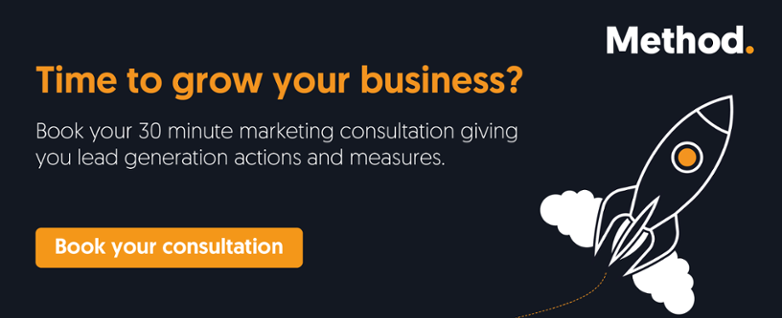Ever wanted to become a mind reader? Get a job in marketing, and you've made the first step.
Creating a data-led buyer persona is a vital step of marketing, and it allows you to know what's going on in your audience’s head. But none of this is down to miracle or chance. And it doesn’t just take a bit of human empathy to create a buyer persona. You need data, and lots of it.
There's a reason that billions upon billions are spent on data, on a yearly basis. A survey by Mckinsey showed that companies that used data analysis were 23 times more likely to gain new customers than their competitors.
And not only does data help you sharpen those mind-reading tools - but it can save you a lot of money. By directing your time, energy, efforts and finances towards logical, data-driven solutions, you're streamlining your efforts to push those conversions and generate solid leads. Take Netflix, for example. By gathering and analysing Big Data, they saved a whopping $1 between 2021/2022 (Finances Online, 2021).
The more, the better.
Data is black and white evidence that answers your necessary customer-based questions. Both qualitative and quantitative data helps you draw fact-based conclusions about your customer, and why they buy. Here are a few common things that data can answer, in terms of buyer personas:
-
Who are your audience?
-
What works/doesn't work for your customers?
-
What are your customer pain points?
-
How does my customer behave in the buyer journey?
-
What are your audience most interested in?
-
Why have your prospects purchased from a competitor instead?
-
Are you targeting on the right platforms?
You want to grab as much data as you possibly can. Data gives you the answers, and helps you to formulate a real response. It also provides the necessary foundations to build both your marketing plan and your buyer persona.
How do I generate data?
Let's face it, getting data doesn't happen overnight. Getting a load of solid, useful data takes a bit of patience, some organisation, and a bit of detective work. There are a few different ways you can conduct research to funnel the data you need. Put the cogs in place early on, and set up the necessary trackers to do the work for you (analytics tools, and automation tools are your best friend). But don't just rely on tech: you need some feedback from some real, lived experiences - from both colleagues and customers alike.
Here are some great ways of getting reliable data:
| Data Generation | How it's useful | Notables |
|---|---|---|
| Customer surveys | Provides some statistical data about real customer experiences | Make your surveys concise |
| Customer interviews | Provides a deeper insight into your customer's experience | Don't be spammy or annoying |
| Co-worker insights | Gives you an inside scope of department-customer experiences | Catch up with all departments to get a well-rounded scope |
| Lead intelligence | Allows you to compare automated data within your CRM | Set automatic trackers filtered to the most useful information |
| Social media intelligence | Generates an overview of both prospect and customer online behaviour | Get a full report of social analytics |
| Website analytics | Narrows down your most popular content | Differentiate between organic searches and linked content (have they arrived on your site naturally, or were they directed?) |
Prioritise customer-based data
The idea of trying to contact your customers for a survey or some feedback might seem like grasping gold dust at first, but by offering incentive-led survey schemes, you're more likely to get a response.
Your real-life customer data is something you can use to mirror your buyer personas. It's always better to go from the facts, rather than the hypotheticals and guesswork. Your data will generate a number of different personas - so it might be worth tweaking your interview questions for different sample pools of customers/prospects.
Keep up with your competitors
Staying up to date with the latest competitor news can be invaluable. Be the nosy neighbour, and keep track of your available competitor data. Of course, you aren't going to know the ins and outs of their statistics, but their ratings and reviews can give you a pretty good idea of why your prospects are buying from them.
Analyse patterns
Once you've gathered your data, you've done half the job. The next step is data analysis.
If you've organised and compartmentalised your data well enough, then you'll notice some really telling patterns straight away. If you've got clear patterns in your data, then it can speak volumes for your buyer persona. Clear divides between your numbers can mean that the data essentially does the work for you.
Whether that's patterns in customer behaviour, attributes or online presence - finding patterns will give you correlative data that will add the fuel your marketing plan needs to kick off.
But it's not always the case. Your findings and analysis could cause you to conduct further research, to provide an even deeper insight into your customer.




